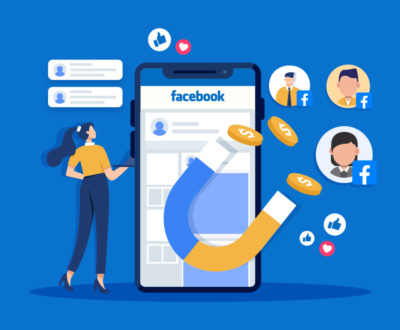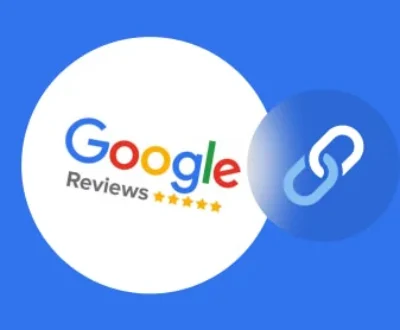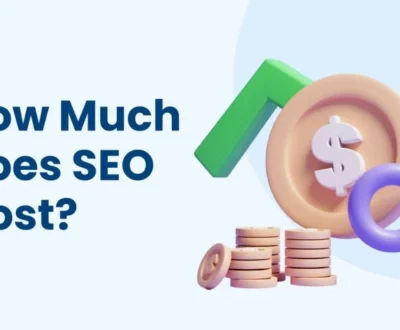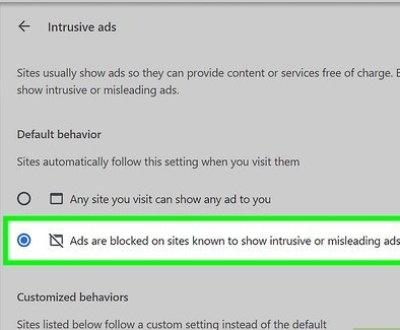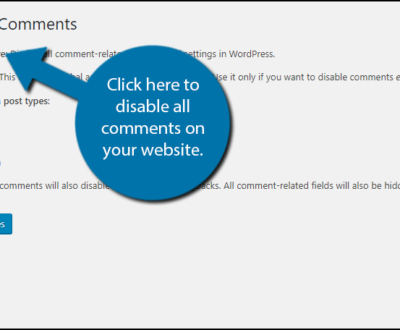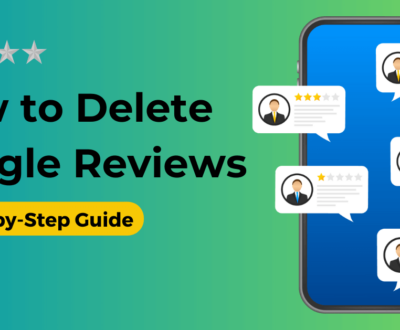How to Create an Effective Strategic Digital Marketing Plan
- January 15, 2023
- Digital Marketing, Inbound Sales
At The Serial Seller we are strong believers in Strategic Digital Marketing.
Only moving from one Digital Marketing step to another once you have met certain criteria.
We provide a plan and strategy around moving from the cheapest acquisition channels to the more expensive acquisition channels as you grow your business and are able to drive more viewers to your website.
We believe that an omnichannel marketing strategy is essential for marketers to take advantage of the growing digital marketing opportunities for acquiring and retaining customers – so you can win more sales.
Consumers and businesses alike are almost always online and on the go – and you want to be able to reach them and observe their behavior and where they spend their time.
But when you’re growing a business, this ever-changing digital landscape can quickly become an overwhelming one. With a number of other responsibilities and tasks that you need to do, how can you also efficiently create, fine-tune, and maintain an agile digital marketing strategy?
We’ve put together the below about marketing strategies to help you improve your digital presence and grow better.
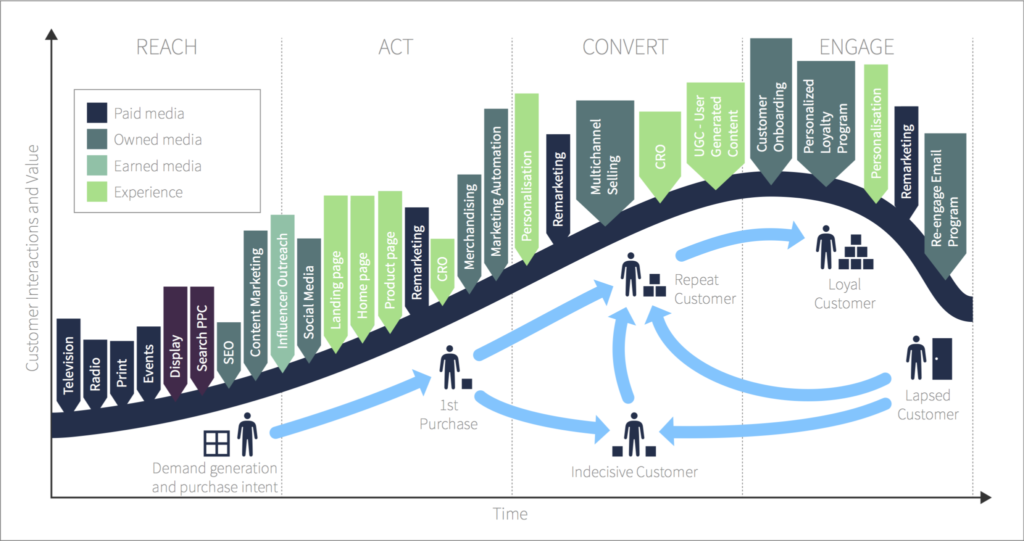
How to Create a Digital Marketing Strategy
1. Build your buyer personas.
For any marketing strategy – digital or not – you need to know who you’re marketing to. The best digital marketing strategies are built upon detailed buyer personas, and your first step is to create them.
Buyer personas represent your ideal customer(s) and can be created by researching, surveying, and interviewing your business’s target audience.
It’s important to note that this information should be based upon real data whenever possible, as making assumptions about your audience can cause your marketing strategy to move in the wrong direction.
To get a rounded picture of your persona, your research pool should include a mixture of customers, prospects, and people outside your contacts database who align with your target audience.
But what kind of information should you gather for your own buyer persona(s) to inform your digital marketing strategy?
That depends on your business — it’s likely to vary depending on whether you’re B2B or B2C, or whether you sell a high-cost or low-cost product.
Here are some starting points that you can fine-tune and tailor to your particular business.
Quantitative and Demographic Information
- Location: Use web analytics tools to easily identify what location your website traffic is coming from.
- Age: Depending on your business, this may or may not be relevant information. But if it is, it’s best to gather this data by identifying trends in your existing prospect and contact database.
- Income: It’s best to gather sensitive information like personal income through persona research interviews, as people might be unwilling to share these details via online forms.
- Job Title: This is something you can get a rough idea of from your existing customer base and is most relevant for B2B companies.
Qualitative and Psychographic Information
- Goals: Depending on what challenge your product or service solves, you may already have a good idea of the goals of your buyer persona. Cement your assumptions by speaking to real customers and internal sales and customer service reps.
- Challenges: Speak to customers, sales and customer service reps, and any other customer-facing employees to get an idea of the common challenges your audience members face.
- Hobbies/Interests: Ask customers and those who align with your target audience about their hobbies and interests. If you’re a fashion brand, for example, it’s helpful to know if large segments of your audience are also interested in fitness and well-being to inform future content and partnerships.
- Priorities: Talk to customers and target audience members to find out what’s most important to them in relation to your business. For example, if you’re a B2B software company, knowing your audience values customer support over a competitive price point is very valuable information.
By combining all of these details, you’ll be able to create buyer personas that are accurate and highly valuable for your business.
2. Identify your Business goals and the digital marketing tools you’ll need.
Your marketing objectives should always be tied back to the fundamental goals of your business.
For example, if your business’s goal is to increase online revenue by 20%, your marketing team’s goal might be to generate 50% more leads via the website than the previous year to contribute to that success.
Whatever your overarching digital marketing goal is, you must be able to measure the success of your strategy along the way with the right digital marketing tools.
For instance, the Reporting Dashboard in HubSpot brings all of your marketing and sales data into one place, so you can quickly determine what works and what doesn’t to improve your strategy for the future.
3. Evaluate your existing digital channels and assets.
When reviewing your existing digital marketing channels and assets to determine what to incorporate in your strategy, it’s helpful to first consider the big picture — this will prevent you from feeling overwhelmed or confused.
Gather what you have, and categorize each vehicle or asset in a spreadsheet, so you have a clear picture of your existing owned, earned, and paid media.
Owned, Earned, Paid Media Framework
To do this effectively, use the owned, earned, and paid media framework to categorize the digital “vehicles,” assets, or online channels you’re already using and decide what’s a good fit for your strategy.
Owned Media
This refers to the digital assets your brand or company owns — whether that’s your website, social media profiles, blog content, or imagery. Owned channels are what your business has complete control over.
This can also include some off-site content you own that isn’t hosted on your website (e.g. a blog you publish on Medium).
Earned Media
Earned media refers to the exposure you earn through word-of-mouth marketing. Whether that’s content you’ve distributed on other websites (e.g. guest posts), PR work you’ve been doing, or the customer experience you’ve delivered. Earned media is the recognition you receive as a result of these efforts.
You can earn media by getting press mentions and positive reviews as well as by people sharing your content via their networks (e.g. social channels).
Paid Media
Paid media refers to any vehicle or channel you spend money on to catch the attention of your buyer personas.
This includes things like Google AdWords, paid social media posts, native advertising (e.g. sponsored posts on other websites), or any other medium through which you pay in exchange for increased visibility.
Since you have a better grasp of what this framework entails, let’s look at an example.
Say you have an owned piece of content on a landing page on your website that’s been created to help you generate leads. You know you want to incorporate different parts of the framework rather than just working with owned, earned, or paid media alone.
To amplify the number of leads the content generates, you make an effort to ensure it’s shareable so your audience can distribute it via their social media profiles. In return, this will increase traffic to your landing page. This is the earned media component.
To support your content’s success, you might post about the content on your Facebook page and pay to have it seen by more people in your target audience.
This is how the three parts of the framework are able to work together — although, it’s not necessary for success. For instance, if your owned and earned media are already both successful, you might not need to invest in paid. So, evaluate the best solution to help you meet your goal, and then incorporate the channels that work best for your business into your digital marketing strategy.
Now you know what’s already being used, you can start to think about what to keep and what to cut.
4. Audit and plan your owned media campaigns.
At the heart of digital marketing is owned media — and it almost always comes in the form of content. That’s because nearly every message your brand broadcasts can be classified as content, whether it’s an About Us site page, product descriptions, blog posts, ebooks, infographics, podcasts, or social media posts.
Content helps convert your website visitors into leads and customers while improving your brand’s online presence. And when this content is search engine optimized (SEO), it can boost your search and organic traffic.
Whatever your digital marketing strategy goal is, you’ll want to incorporate owned content. To start, decide what content will help you reach your marketing goals.
If your goal is to generate 50% more leads via the website than last year, your About Us page is most likely not going to be included in your strategy, unless that page has somehow been a lead-generation machine in the past.
Here’s a brief process you can follow to work out what owned content you need to meet your digital marketing strategy goals.
Audit your existing content.
Make a list of your existing owned content, and rank each item according to what has previously performed best in relation to your current goals.
For example, if your goal is lead generation, rank your content according to which pieces generated the most leads over the last year (such as a blog post, ebook, or site page).
The idea here is to figure out what’s currently working, and what’s not so that you can set yourself up for success when planning future content.
Identify gaps in your existing content.
Based on your buyer personas, identify any gaps in the content you have.
For example, if you’re a math tutoring company and know through research that a major challenge for your personas is finding effective ways to study, create some.
By looking at your content audit, you might discover that ebooks hosted on a certain type of landing page convert really well (better than webinars, for example).
In the case of this math tutoring company, you might make the decision to add an ebook about “how to make studying more effective” to your content creation plans.
Create a content creation plan.
Based on your findings and the gaps you’ve identified, make a content creation plan outlining the content that’s necessary to help you hit your goals.
This should include:
- A title
- Format
- A goal
- Promotional channels
- Why you’re creating the content
- The priority level of the content
This can be a simple spreadsheet, and should also include budget information if you’re planning to outsource the content creation, or a time estimate if you’re producing it yourself.
4. Audit and plan your owned media campaigns.
At the heart of digital marketing is owned media — and it almost always comes in the form of content. That’s because nearly every message your brand broadcasts can be classified as content, whether it’s an About Us site page, product descriptions, blog posts, ebooks, infographics, podcasts, or social media posts.
Content helps convert your website visitors into leads and customers while improving your brand’s online presence. And when this content is search engine optimized (SEO), it can boost your search and organic traffic through organic search.
Whatever your digital marketing strategy goal is, you’ll want to incorporate owned content. To start, decide what content will help you reach your goals.
If your goal is to generate 50% more leads via the website than last year, your About Us page is most likely not going to be included in your strategy, unless that page has somehow been a lead-generation machine in the past.
Here’s a brief process you can follow to work out what owned content you need to meet your digital marketing strategy goals.
Audit your existing content.
Make a list of your existing owned content, and rank each item according to what has previously performed best in relation to your current goals.
For example, if your goal is lead generation, rank your content according to which pieces generated the most leads over the last year (such as a blog post, ebook, or site page).
The idea here is to figure out what’s currently working, and what’s not so that you can set yourself up for success when planning future content.
Identify gaps in your existing content.
Based on your buyer personas, identify any gaps in the content you have.
For example, if you’re a math tutoring company and know through research that a major challenge for your personas is finding effective ways to study, create some.
By looking at your content audit, you might discover that ebooks hosted on a certain type of landing page convert really well (better than webinars, for example).
In the case of this math tutoring company, you might make the decision to add an ebook about “how to make studying more effective” to your content creation plans.
Create a content creation plan.
Based on your findings and the gaps you’ve identified, make a content creation plan outlining the content that’s necessary to help you hit your goals.
This should include:
- A title
- Format
- A goal
- Promotional channels
- Why you’re creating the content
- The priority level of the content
This can be a simple spreadsheet, and should also include budget information if you’re planning to outsource the content creation, or a time estimate if you’re producing it yourself.
5. Audit and plan your earned media campaigns.
Evaluating your previous earned media against your current goals can help you get an idea of where to focus your time. Look at where your traffic and leads are coming from (if that’s your goal) and rank each earned media source from most effective to least effective.
You can obtain this information using tools like the Sources reports in HubSpot’s Traffic Analytics tool.
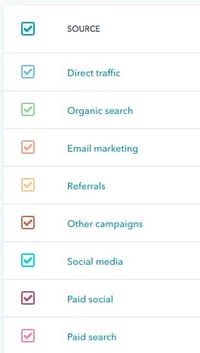
You may find a particular article you contributed to the industry press drove a lot of qualified traffic to your website, which boosted conversion rates. Or, you may discover LinkedIn is where you see most people sharing content, which increases traffic.
The idea is to build a picture of what types of earned media will help you reach your goals (and what won’t) based on historical data. However, if there’s something new you want to experiment with, don’t rule it out just because it’s never been done before.
6. Audit and plan your paid media campaigns.
This process involves much of the same process: You need to evaluate your existing paid media across each platform (e.g. Google AdWords, Facebook, Twitter, etc.) to figure out what’s most likely to help you meet your current goals.
If you’ve spent a lot of money on AdWords and haven’t seen the results you’d hoped for, maybe it’s time to refine your strategic approach, or scrap it altogether and focus on another platform that seems to be yielding better results.
By the end of the process, you should have a clear idea of which paid media platforms you want to continue using, and which (if any) you’d like to remove from your strategy.
7. Bring your digital marketing campaign together.
You’ve done the planning and the research, and you now have a solid vision of the elements that will make up your digital marketing activities and strategy.
To review, here’s what you should have solidified so far:
- Clear profile(s) of your buyer persona(s)
- One or more digital marketing-specific goals
- An inventory of your existing owned, earned, and paid media
- An audit of your existing owned, earned, and paid media
- An owned content creation plan or wish list
To provide a better understanding of what digital strategies entail, check out the following list of basic marketing strategies commonly utilized by teams across a range of industries.
Digital Marketing Strategies
1. Publish a blog.
Blogging is one of the primary ways you can market your business digitally. While a few dissenting voices claim that blogging is “a massive waste of your time,” it’s still a major play for businesses that want to attract customers who are genuinely interested in their products and services.
Why? Because well-written, well-researched blog posts often answer an urgent need for a potential customer. For instance, HubSpot sells marketing software, and their users are typically marketing professionals who create plans, campaigns, and editorial calendars for their employers. For that reason, the topics on our blog directly address these needs:
Don’t blog just because; blog with the intent to solve for the customer. To effectively do so, it’s important to understand your target market and their pain points. That way, you can write highly targeted content that’s genuinely helpful for readers.
2. Advertise on specific digital platforms (e.g. Google Ads, Facebook Ads, LinkedIn Ads or Instagram Ads).
An organic blogging strategy is only a portion of the story. It’s just as important to implement non-organic plays, such as paid advertising. Not only will this help you drive more brand awareness, it will also help you reach audiences who can’t find your business organically yet.
This is an important strategy to implement when you’re still growing your blog and not yet getting as much traffic as you want. There are a few types of digital advertising you should consider adding to your digital strategy:
- Social Media Advertising
- Pay-Per-Click (PPC)
- Google Ads
- Online Advertising
Nearly every platform has an option for you to advertise — either through a display network (such as Google’s) or through its built-in ad system (such as Instagram’s, Facebook’s, and LinkedIn’s self-serve advertising portal).
Here’s one example of an ad on LinkedIn:
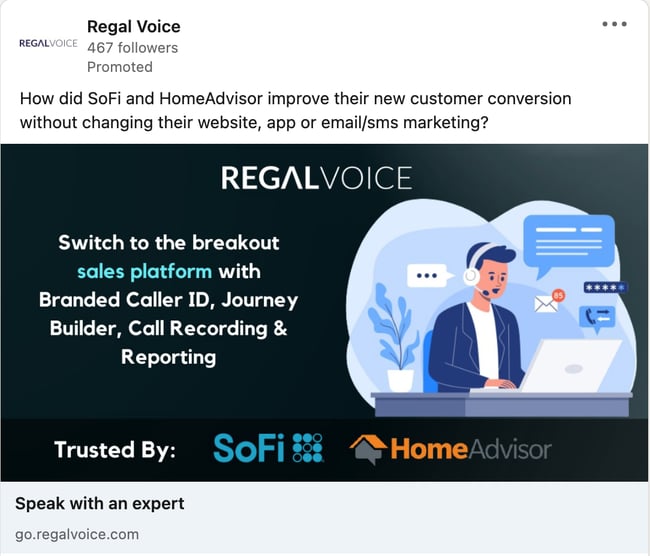
The benefit of advertising is that it’s not dependent on a content marketing strategy or SEO strategy. You simply need to write a few lines of copy, decide on imagery, and launch your advertising campaigns. To ensure that your campaigns are a success, you’ll want to create an advertising plan that outlines who you’re targeting, which channels you’ll be using, and how much you plan to spend.
3. Create an email marketing campaign.
Email marketing is one of the most important digital strategies you can implement today. It gives you plenty of opportunities to nurture customers who are highly interested in your products. After all, you wouldn’t be subscribed to a newsletter of a brand that doesn’t interest you, and a business isn’t supposed to email customers who haven’t signed up to its mailing list, anyway. Not unless it wants to risk diminishing email deliverability.
You can earn subscribers through your blog, contests, and even webinars. Any time someone gives you their email — and every time they give consent to receive communication from you — you have full permission to target them with an email marketing campaign.
The Serial Seller in a Nutshell
A Digital Marketing Strategy defines how companies should:
- Hit our channel leads & sales targets
- Budgets for Acquisition, Conversion, Retention & Growth, Service
- Communicate benefits of using this channel to enhance brand
- Prioritize audiences targeted through the channel
- Prioritize products available through the channel
These days to achieve business growth, Digital Marketing needs to involve one if not most of their social media platforms. You also need to drive customer engagement through Search Engine Optimization and Content Marketing.
If you’re a business owner and want us to learn more about your business objectives and provide guidance on your Strategic Digital Marketing, Book a Call With Us Now!
About us and this blog
We are a Full-Service Sales & Marketing provider that aims to help small to medium businesses increase their leads and sales while helping remove the business owners from their day-to-day activities so they can focus more on the long-term goals of their business.
Book a Meeting with us!
We offer Done-For-You Sales, Sales Coaching, and Advisory as well as Digital Marketing Services. If you want to increase the leads generated for your business and need some guidance and accountability, book a call with us now.
Subscribe to our newsletter!
More from our blog
See all postsRecent Posts
- How Much are Meta Ads April 17, 2025
- How to Get Google Review Link April 14, 2025
- How Much Does SEO Cost Per Month in Australia April 11, 2025

